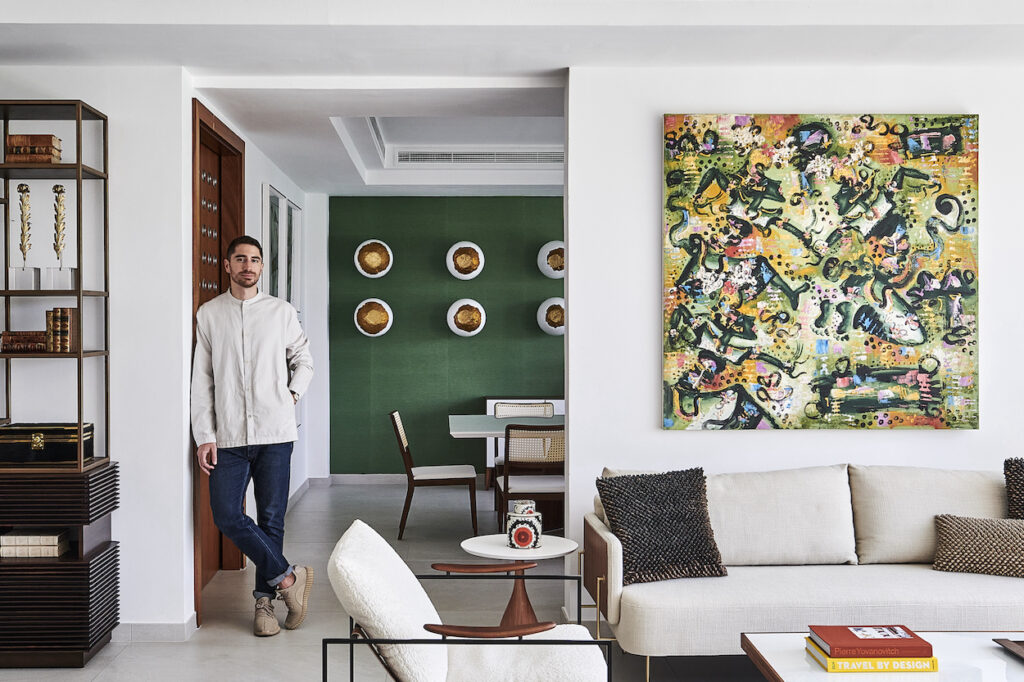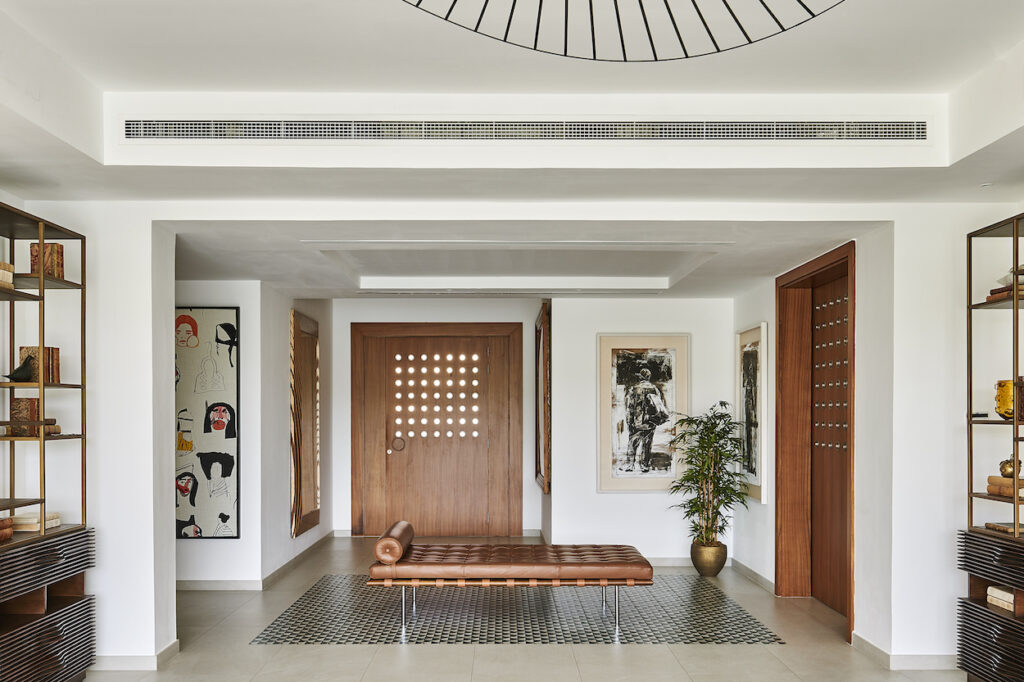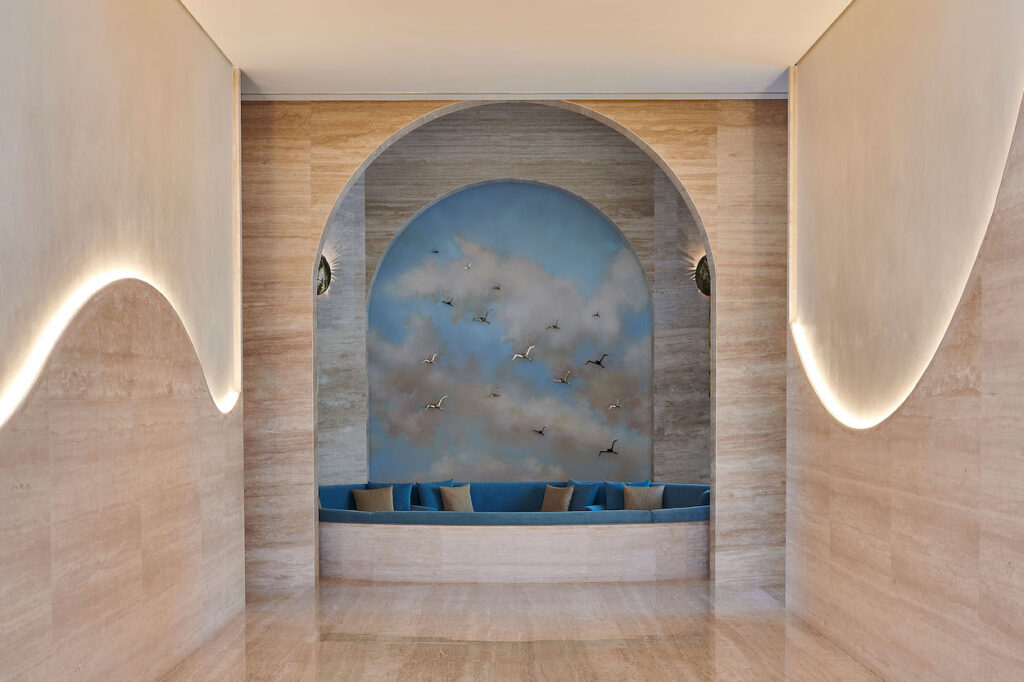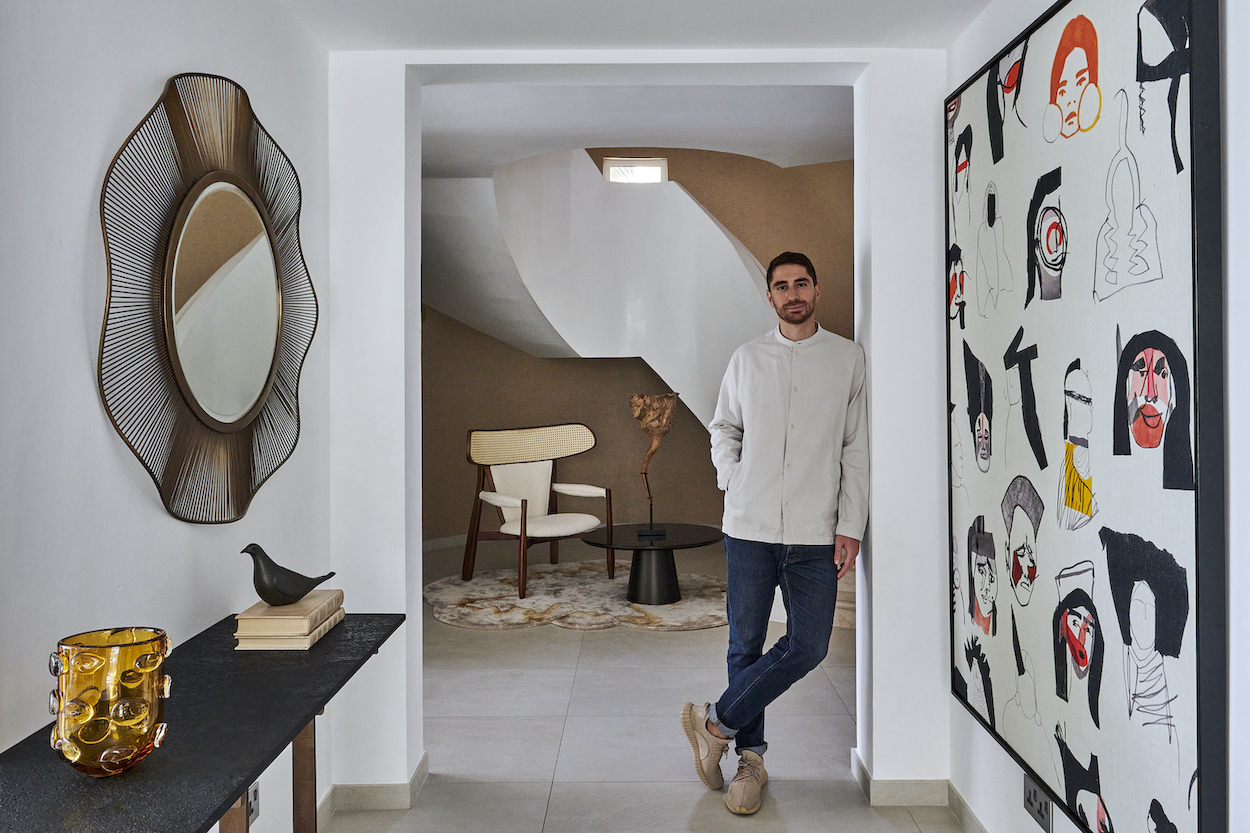Omar Nakkash is the Founder and Design Director of Nakkash Design Studio, a multidisciplinary architecture and design practice based in Dubai. Having been raised around architecture and interior design, Omar believes in taking a holistic approach to interior design and considering the occupants and their individual needs above everything else. His portfolio is characterized by harmonious spaces that carefully balance function and aesthetics.
We recently chatted with Omar about his journey in design, making a name for himself through Nakkash Design Studio, while celebrating 40 years of Nakkash Gallery and keeping the rich family legacy alive.

Saira Malik (S.M.): Nakkash is celebrating its 40th anniversary this year. Could you tell us about the journey of your family-run business?
Omar Nakkash (O.N.): Our roots are based in architecture and interior design. My father, who is the founder of the company, started an architecture practice in Sharjah in 1977. The scope of his work spanned architecture, interior design, furnishing and even art sourcing – in other words, full turnkey services for high-end residential projects. Back then, options in high-end furniture were limited in the UAE, he was forced to travel with his clients to Europe, mainly France and Italy, to select and source the furniture. In order to fill this gap in the market, he began displaying select furniture pieces in his Sharjah studio, somewhat like a physical catalogue. This idea took off so in 1983, we opened a showroom in Dubai.
Our journey started as a design service, became predominantly retail at one point to serve the real estate boom and in the last decade, we have gone back to architecture and interior design with retail complementing the service in ways that gives us a unique edge. We have truly become the one-stop-shop for everything design, fulfilling the vision my father had 40 years ago.
(S.M.): What is your role in the company? When and how did Nakkash Design Studio take shape?
(O.N.): I joined the family business 10 years ago in 2013. I had just completed my Masters in Interior Architecture in Milan after a BA in Design and Management from Parsons in New York – in my view, a balanced education that instilled in me both management thinking and design acumen.
When I returned to Dubai, I dived in to support my father in running the business. As an SME, we have to wear different hats. So, I assisted in projects and operations while also wearing the mantle of the retail buyer. I loved travelling, going to trade fairs, building relationships with suppliers and procuring the furniture but my calling was to go back to the roots of Nakkash. I was passionate about building a holistic design practice that placed the occupant’s needs above everything else to create concepts and spaces that evoke emotional responses in the user. And that’s how Nakkash Design Studio was born in 2015. In the last 8 years, we have worked across residential and commercial sectors on projects that encompass architecture, interiors, graphics and even product design.
(S.M.): How did your exposure to haute couture design from a young age prepare you for this career path?
(O.N.): I grew up in an inspiring household with influences in fashion and design. While my father had a hand in developing the high-end furniture market in the UAE, my mother is credited for introducing certain luxury fashion brands to the country 30 years ago through Bianca – her boutique in Wafi Mall. Immersed in this world unconsciously moulded my sensitivity to materials, fabrics, colors and design.
When I showed artistic inclination at a young age, my parents nurtured it in a very subtle way. As a 12-year old, I would travel with my dad to design fairs and watch him discover new brands, place orders, select fabrics and finishes. During my first internship at the showroom I was tasked to simply read, observe, shadow and ask questions. I remember being introduced to Vicente Wolf’s ‘Learning to See’ as a teenager. Later, I was encouraged to sketch and design furniture layouts. All of this happened in the gentlest manner that it organically shaped my career in design.
(S.M.): What would you say makes Nakkash standout in such a competitive market?
(O.N.): We have to constantly maintain a fine balance between current demands and staying true to the DNA of our brand. At our core, we are a creative company, not a trading entity simply importing and selling furniture. Our strength lies in being able to combine the two worlds – design and retail, in a way that is unique, human centric and concept driven.
Given our retail background and experience in sourcing over the last 40 years, we have access to a very broad and global base of manufacturers and suppliers. This enables us to create spaces curated with uncommon furniture pieces and accessories unlike most other retailers who share similar stock.
What has helped us stand out thus far is a holistic design practice meeting highly selective curation. But we need to keep pushing the boundaries of our practice and keep our retail offering fresh through new and exciting partnerships.

(S.M.): What is the most rewarding aspect of working in a company that your father established?
(O.N.): The most rewarding aspect is to be able to work with my idol, my father, who in my opinion is the best architect and interior designer. Most of what I have done, I have learnt from him. My experience in the family business sharpened my FF&E and sourcing skills. The credit for this goes entirely to my father because he introduced me to suppliers, craftsmen, brands and shaped my approach to design.
When I established my own design practice, my father was very supportive of it. Nakkash Design Studio is a space to express my individual creativity and design signature. Once in a while, I seek my father’s opinion after a project is complete to get his feedback on what could have been improved. It is a nourishing mentor-mentee relationship.
(S.M.): What is your approach to design?
(O.N.): Mine is a hybrid approach that comes from a combination of my formal education in design and the informal grooming I have had under my father right from a very young age. The concept-driven approach comes from my time in Milan while Parsons really instilled human-centric design thinking. My approach to aesthetics, functionality and my eye for furniture design and art are gifts from my father.

(S.M.): What inspires you to stay creative and keep designing?
(O.N.): Designing is innate for me. I don’t know what I would do if I didn’t create. What I really enjoy is challenging myself with different kinds of design and scale. From architectural work and A-Z build, I can easily switch to designing a coffee table or graphics for a client. I’m just someone who loves engaging with design in every possible way. It can be anything from a logo to a lived experience and everything in between.
(S.M.): What is the most challenging aspect of working with the family?
(O.N.): Sometimes expressing your opinion and fighting for something you believe in, especially when it conflicts with your family member’s opinion, can be challenging. It is acceptable to have heated debates with your colleagues because it is done in the spirit of achieving the best for the project. But the same is trickier when you are working with the family, especially when you are operating within the Arab culture where you have to be respectful and accept the direction offered by your elders even when you disagree with it.
For the most part we are able to separate the professional and personal and communicate with objective clarity but there are times when it gets messy.
(S.M.): How do you hope to expand your father’s vision and honor his legacy?
(O.N.): I believe that my task is not to expand but evolve my father’s vision. There are aspects of our DNA that should be preserved while we modernize the family business through actions like the e-commerce platform. It is important to expand to a wider target audience and be aspirational and relevant to changing customer needs. Just as he introduced elegance and timelessness in the 70s, it is my role to introduce the same values to the younger generation.
I have named my design studio under the same umbrella as the family business. To me, this is an act of honoring his legacy even as I make my own.
(S.M.): What advice would you share with design students with aspirations to start their own business?
(O.N.): Don’t jump the gun. Gain experience, work elsewhere, take the time to really understand the design landscape and think about how your design studio will fit in that landscape. Try and carve out a niche for yourself. Understand who you are as a designer and keep working on refining your craft.







